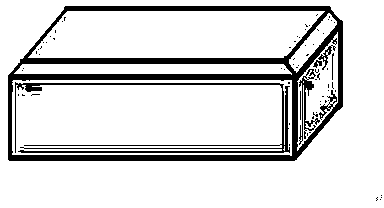Preparation method for reinforced photocatalysis environment-friendly brick
A photocatalytic, environmentally friendly brick technology, applied in the field of resource recycling technology and material science, can solve problems such as insufficient photocatalytic activity
- Summary
- Abstract
- Description
- Claims
- Application Information
AI Technical Summary
Problems solved by technology
Method used
Image
Examples
Embodiment 1
[0010] Mix chopped glass fibers accounting for 1.6% of the total mass of the surface layer of photocatalytic environmental protection bricks and 3.3% anatase nano-titanium dioxide, add appropriate amount of furnace bottom slag, cement and water, and stir evenly to prepare photocatalytic environmental protection brick samples. The flow rate is 1L / min, the NO concentration is 1ppm, and the measured NO removal efficiency is 48.3%.
Embodiment 2
[0012] Mix chopped glass fibers accounting for 0.8% of the total mass of the surface layer of photocatalytic environmental protection bricks and 3.3% anatase nano-titanium dioxide, add appropriate amount of sand, cement and water, and stir evenly to prepare photocatalytic environmental protection brick samples, with a flow rate of 1L / min, NO concentration 1ppm intake air, the measured NO removal efficiency is 39.5%.
Embodiment 3
[0014] Mix chopped glass fibers accounting for 0.8% of the total mass of the surface layer of photocatalytic environmental protection bricks and 3.3% anatase nano-titanium dioxide, add appropriate amount of furnace bottom slag, cement and water, and stir evenly to prepare photocatalytic environmental protection brick samples. The flow rate is 1L / min, the NO concentration is 1ppm, and the measured NO removal efficiency is 42.4%.
PUM
 Login to View More
Login to View More Abstract
Description
Claims
Application Information
 Login to View More
Login to View More - R&D
- Intellectual Property
- Life Sciences
- Materials
- Tech Scout
- Unparalleled Data Quality
- Higher Quality Content
- 60% Fewer Hallucinations
Browse by: Latest US Patents, China's latest patents, Technical Efficacy Thesaurus, Application Domain, Technology Topic, Popular Technical Reports.
© 2025 PatSnap. All rights reserved.Legal|Privacy policy|Modern Slavery Act Transparency Statement|Sitemap|About US| Contact US: help@patsnap.com


